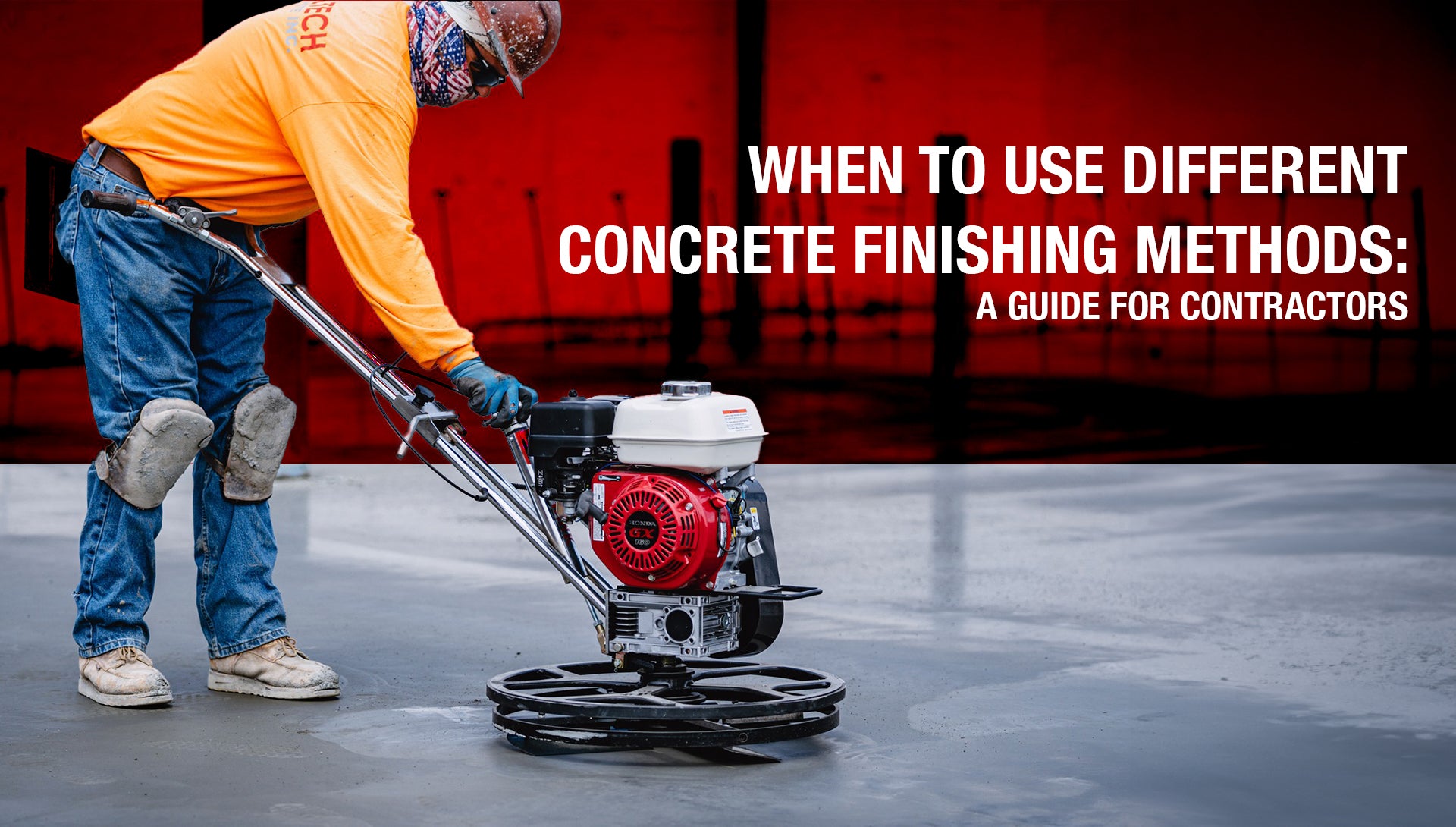Concrete finishing is an essential part of the construction process that affects the durability, appearance, and functionality of a concrete surface. Whether it's a residential driveway, a commercial warehouse floor, or a decorative concrete project, choosing the right finishing method is crucial for achieving the desired result. This blog will guide you through different concrete finishing methods and help you decide when to use each one.
Understanding Concrete Finishing
Concrete finishing involves several techniques used to treat the surface of concrete after it has been poured and before it cures completely. The finishing method chosen can affect the concrete's texture, color, durability, and slip-resistance.
1. Bull Floating
When to Use: Directly after the concrete has been leveled.
Ideal for: Removing ridges, filling voids, and smoothing the surface before bleed water accumulates.
Bull floating is performed with a large, flat, rectangular piece of wood or magnesium (bull float) pushed and pulled across the wet concrete. This method helps to level ridges and fill voids, creating a smooth and uniform surface.

Photo by Tanner Vote
2. Hand Troweling
When to Use: For smaller projects or in tight areas where machines can't reach.
Ideal for: Garages, small pathways, and intricate designs.
Hand troweling allows for a high level of detail and is perfect for smaller or more detailed work. It can be used to create a smooth or textured surface, depending on the technique and tools used.
3. Power Troweling
When to Use: For medium to large concrete areas that require a smooth or polished finish.
Ideal for: Warehouses, large driveways, and commercial floors.
Power trowels are machines used to achieve a perfectly smooth and level surface. They can be equipped with different blades to adjust the finish—from float blades for initial smoothing to combination blades for final finishing. Power troweling is efficient and leaves a hard, polished surface that is durable and aesthetically pleasing.
4. Stamped Concrete
When to Use: When a decorative finish is desired.
Ideal for: Patios, sidewalks, and decorative interiors.
Stamped concrete involves pressing molds into the concrete while it is still soft. After the concrete sets, it can be colored and sealed. This method is great for adding texture and mimicking other materials like brick, stone, or wood.
5. Broom Finishing
When to Use: When slip resistance is needed.
Ideal for: Outdoor surfaces, pool decks, and any area requiring a non-slip texture.
Broom finishing is achieved by pulling a broom across the surface of the freshly troweled concrete to create small ridges that provide traction even when the surface is wet.

Photo by Brina Blum
6. Exposed Aggregate Finish
When to Use: For a decorative and durable finish.
Ideal for: Walkways, decorative walls, and areas where durability and aesthetics are important.
This method involves placing and finishing the concrete before a special chemical is applied to stop the top layer of cement from curing. The top layer is then washed away to reveal the edges of the natural stone or other materials in the concrete, creating a beautiful, durable finish.

Conclusion
Choosing the right finishing technique is as important as selecting the type of concrete mix. For large-scale projects or when consistency and speed are paramount, investing in a quality power trowel can be extremely beneficial. These tools not only enhance productivity but also ensure a consistently high-quality finish across various applications. Remember, the goal of concrete finishing is not only to improve the look of the concrete but also its functionality and lifespan. Improper finishing and concrete selection can lead to premature failure and cracking. To learn more on how to repair cracked concrete, click here.
For contractors looking to streamline their operations and ensure top-tier results, understanding when and how to apply these concrete finishing methods will be a game changer in your project outcomes.










